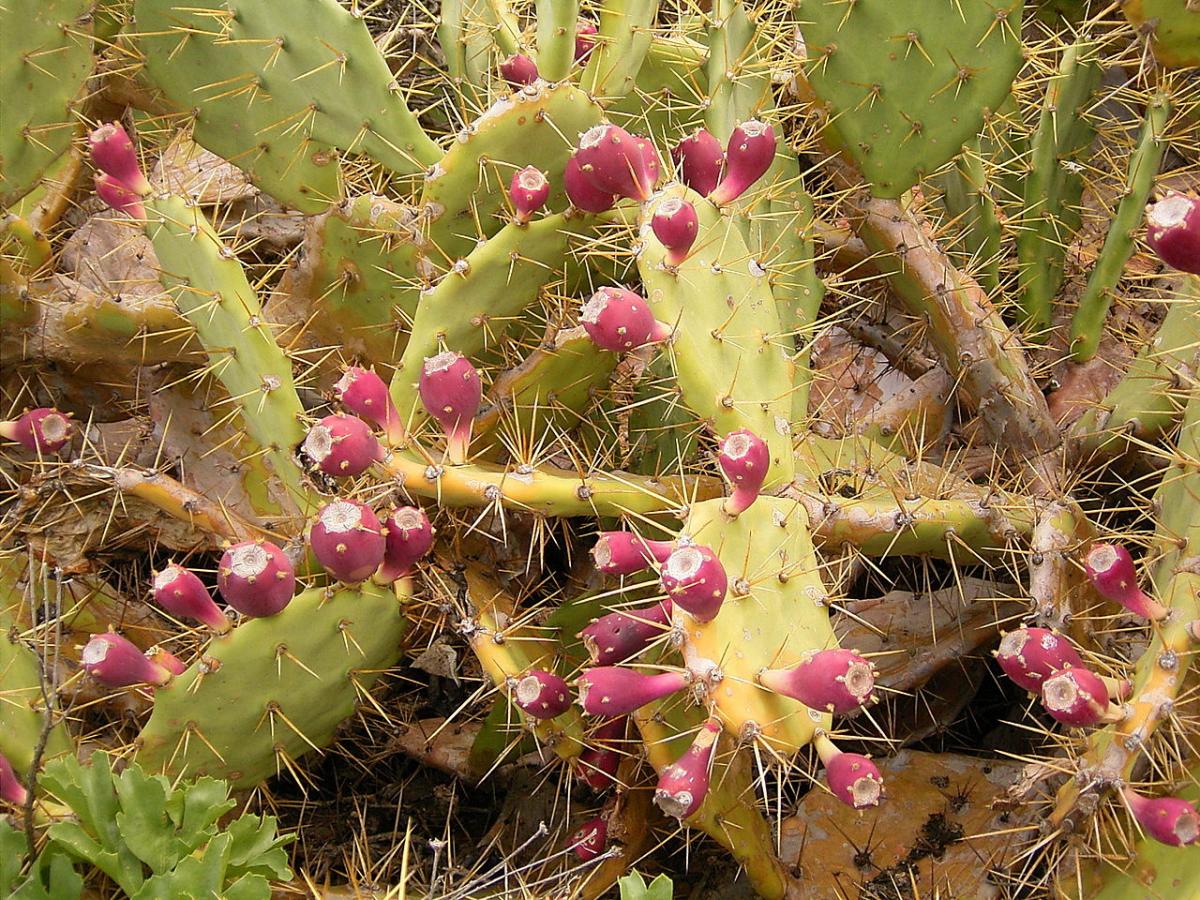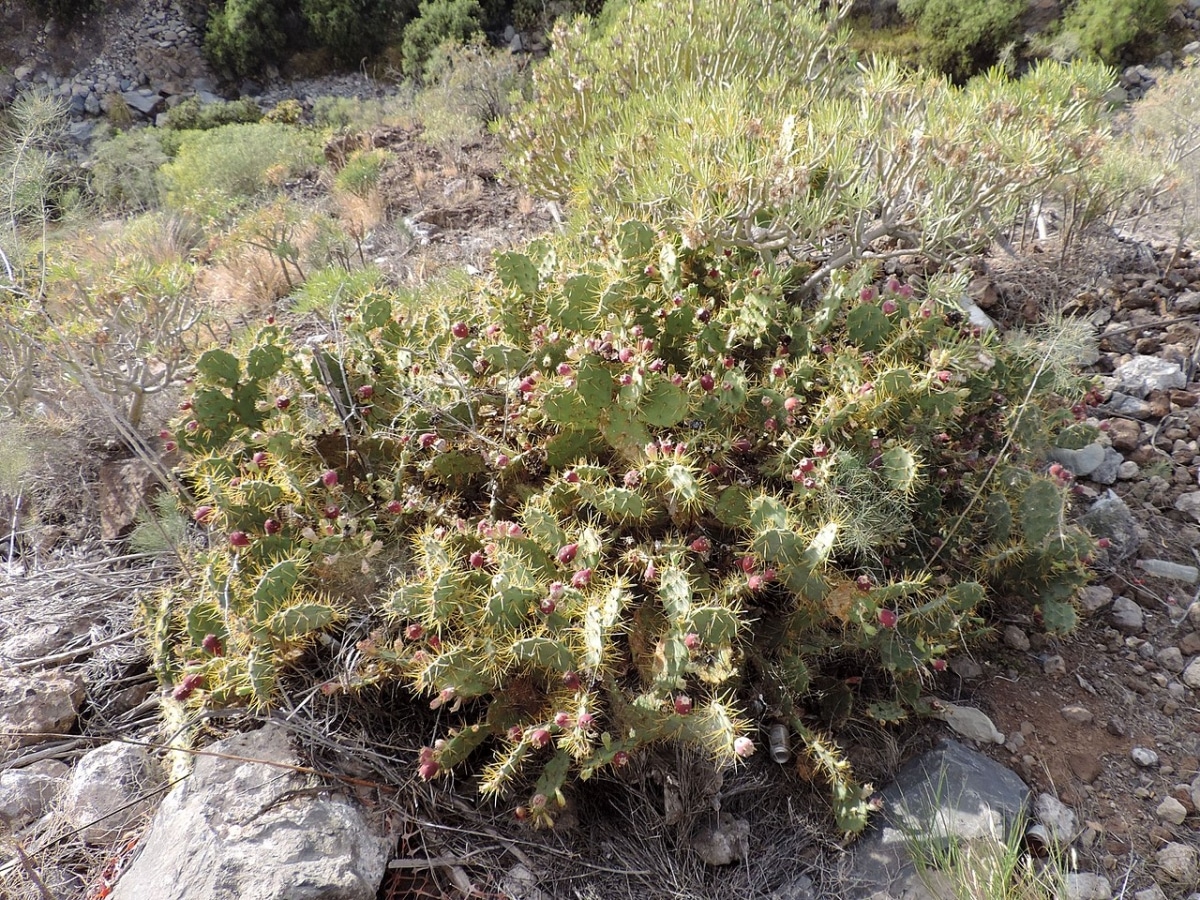
Image - Wikimedia / Frank Vincentz
La Opuntia dillenii It is one of the cactus species that have the longest and sharpest spines. In addition, it resists drought quite well, being able to live practically without receiving any water for weeks.
But the problem it is very invasive, like the prickly pear. It multiplies quickly by cuttings, and because it has very long and sharp spines, it is almost unrivaled.
Origin and characteristics of Opuntia dillenii

Image - Wikimedia / Krzysztof Ziarnek, Kenraiz
The Indian tuno, as it is known in the Canary Islands, it is a native species of Central America belonging to the genus Opuntia. Specifically, it grows in Mexico, and in many islands of the Antilles, such as Jamaica, Cuba, Puerto Rico or Haiti. In Spain it is an invasive plant, and as such it was included in the Spanish Catalog of Invasive Exotic Species, which is regulated by Royal Decree 630/2013 of August 2. Thus, in this country its possession, as well as its trade and traffic are prohibited, in addition to of course its introduction into the natural environment, since it poses a serious threat to the native flora.
Focusing on its characteristics, we are talking about a species that reaches about 2-3 meters in height at most, and about the same width. Its leaves, called stalks in common language, or cladodes in botanical language, are actually flattened branches that perform the same functions as normal leaves, such as photosynthesis. For this reason, they are green in color, since they contain chlorophyll.
Glochidia sometimes emerge from their areoles, which are leaf spines that in the case of this species are yellow in color. These appear in number from 1 to 5, and measure up to 5 centimeters in length. You have to be very careful with them, as a simple rub is enough to make them stick to clothing or become embedded in the skin.
The flowers are yellow, sometimes with orange or reddish tones, and are between 7 and 8 centimeters long. Their shape is spherical, and they lack spines. The fruits are pinkish-reddish and edible.
What to do if we see it in nature?
First of all it is important that you remember its place of origin: if you are not in America, for example if you see it in Spain, then it is a cactus that is invading, or has already invaded, an ecosystem, so the best reaction we can have is to notify the person in charge of the environment of the autonomous community so that they take the necessary measures.
In the event that we see it in a garden, be it public or private, the first thing to do is make sure that it is a Opuntia dillenii, and for this you can search for images on the Internet and, above all, consult the characteristics to verify that the plant in front of us corresponds to the species we suspect it to be; or talk to the manager.
Can you cultivate Opuntia dillenii outside of Spain?

Image - Wikimedia / Santamarcanda
In Spain, as we said, its cultivation is totally prohibited. But If you are in another country, the most important thing you have to do is inform yourself to see if it is included in the catalog of invasive species, since if it is, its possession may not be allowed.
Now, In the event that its trade is legal, then we recommend having it in a pot in order to control its growth, thus preventing it from invading the garden. Put it in a sunny place, with a substrate that drains the water very well, and water it very few times a week: no more than two.
You do not have to worry about pests or diseases, because it is very rare that it has. You may see a mealybug on it, but nothing serious. Anyway, you can remove them with water and a little mild soap.
Of course, you have to keep in mind that does not resist frost. Only up to -1ºC and if they are punctual. Therefore, if the temperature drops more in your area, you should protect your Opuntia dillenii.